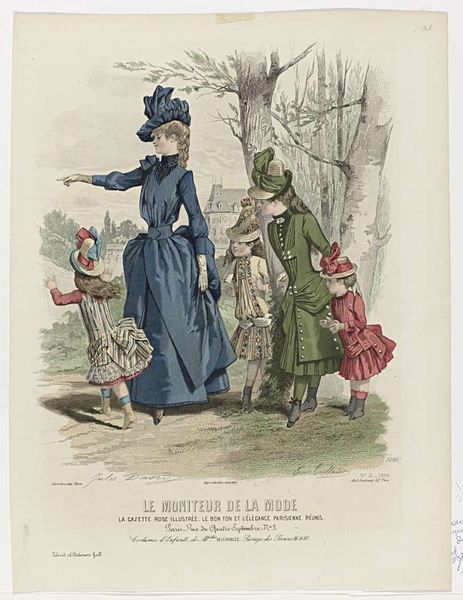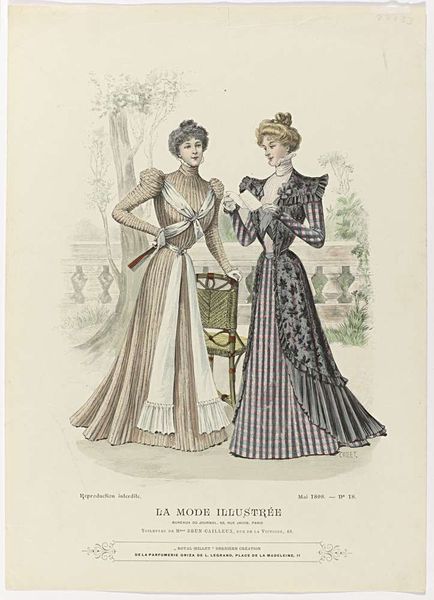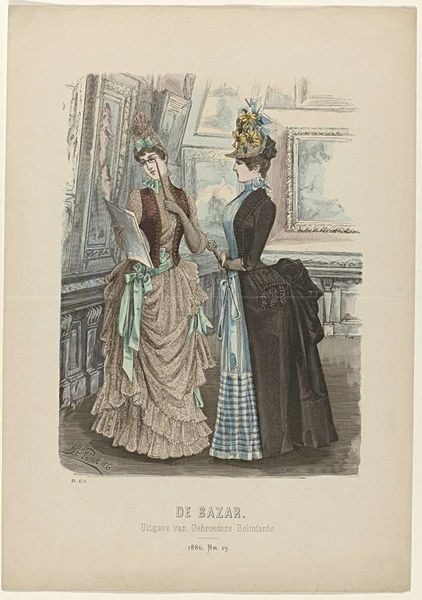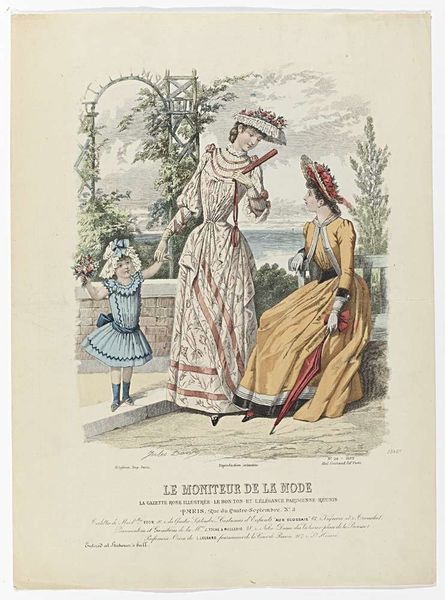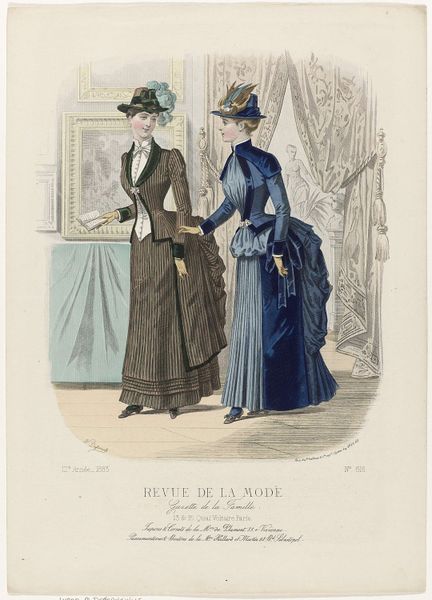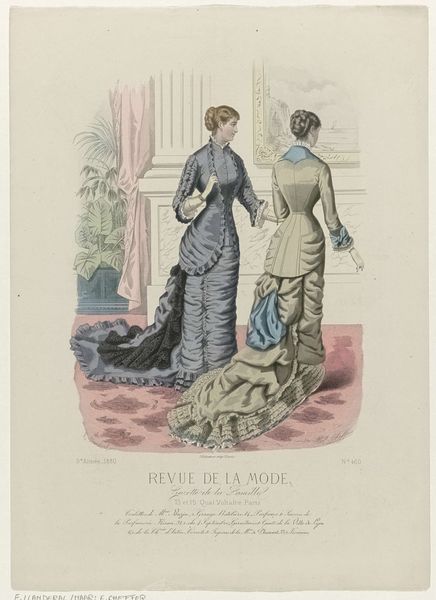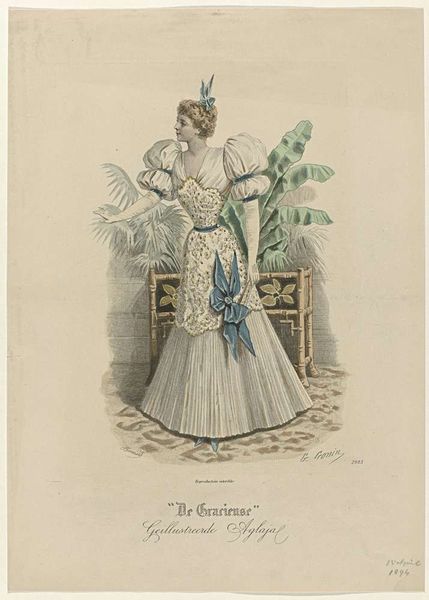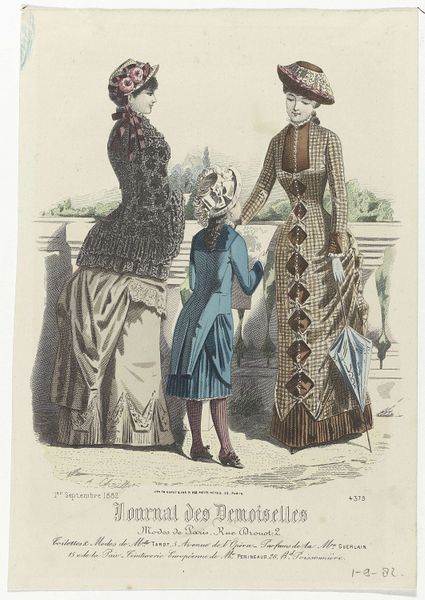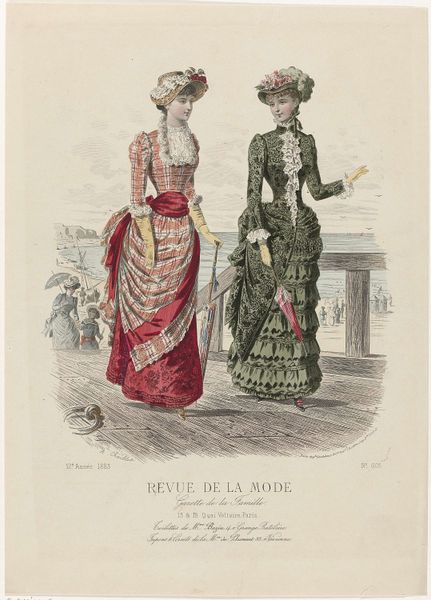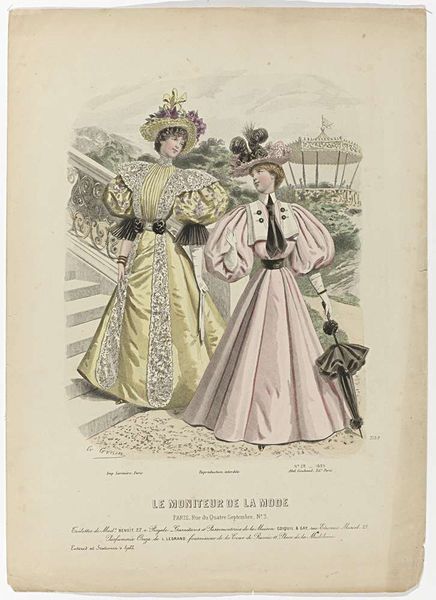
Le Moniteur de la Mode, 1890, Nr. 2616, No. 20 : Toilettes de Mad.e L.Alexandre & Ci (...) 1890
0:00
0:00
graphic-art, lithograph, print
#
portrait
#
graphic-art
#
art-nouveau
#
lithograph
# print
#
genre-painting
Dimensions: height 385 mm, width 278 mm
Copyright: Rijks Museum: Open Domain
Editor: Here we have "Le Moniteur de la Mode," Number 2616, from 1890 by Edouard Tailland, a lithograph print showcasing women’s fashion. I find the image captivating with its delicate lines and soft colors, depicting two women in elegant dresses. What particularly strikes me is how the details of the garments are rendered. How do you interpret this work, thinking about its context? Curator: Considering this is a print from a fashion magazine, "Le Moniteur de la Mode", let’s examine its means of production. The lithographic process allowed for mass production, democratizing fashion trends for a burgeoning consumer class. The details, as you noted, showcase the labor involved in producing these garments – the sewing, the choice of fabrics… Were these materials accessible to all, or did they represent aspirational consumption? Editor: That’s interesting. So, the image isn’t just about the aesthetic; it reflects the industrial processes and social hierarchies of the time? The fact that this was widely distributed says something about its influence. Curator: Exactly. The image serves as a commodity itself, fueling desires. The materials represented– the silks, the specific cuts, the trimmings— all signify access and status. How does the magazine itself become a material object circulating within society? Its lifespan, its readership... These factors contributed to its cultural significance. We can trace shifts in labor practices and material consumption through publications like this. Editor: I hadn’t thought about it that way, focusing more on the artistry itself. It’s fascinating to consider how the print, as a material object, played a role in shaping those social landscapes. Curator: Indeed, by looking at the print through a materialist lens, we reveal hidden narratives of labor, class, and the commodification of fashion in 1890. What do you think is most striking about this in retrospect? Editor: Thinking about what it took to produce the lithograph alongside what it would take to create even one of the garments shown provides insight into labor practices then. I appreciate understanding its multiple layers through a Materialist perspective.
Comments
No comments
Be the first to comment and join the conversation on the ultimate creative platform.
